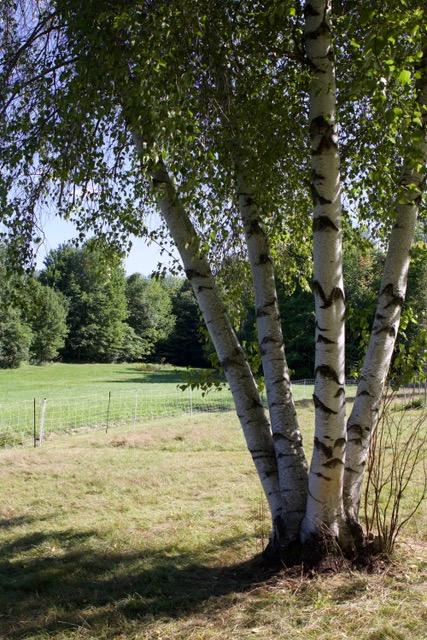When traveling, we try to take into account the fact that our time is limited and so not to over-plan, letting the breeze blow us from place to place. We’ve learned to quiet the temptation to see as much as possible in ten days, trying instead to learn what we can about the place where we’ve landed. This trip we would be in an urban setting so decided to use Scotland’s extensive rail system to [help us] see a bit more of the countryside. Always a draw for us.
As we sped along the tracks it took time to break free of buildings, car lots and people. We leaned back against the seats and finally watched grass finally replace concrete. Before long checkerboard patterns of stone walled paddocks were rising up in front of us: pastures full of freshly sheared sheep with their tiny, stiff legged newborns. We’d landed in the Scottish Borders, dutifully paying homage to the [place of] origin of the Border Collie.
We popped into T-4-2 for the T, every nook and cranny stuffed with tea pots from whimsical to royal, and chose curried chicken salad over clotted cream. Once finished we (meaning Paul) pulled on the raincoat-ladened backpack that travels everywhere, and off we went in search of Ovine.
One might, understandably, ask why people who have a sheep farm would be interested in more sheep while taking a vacation, “a break” from sheep. We asked ourselves this same question, didn’t seem to have an answer other than the obvious and so, here we were.
In the UK you are allowed to walk freely onto any open land. This encourages the spirit of the meanderer, so Paul and I set off down a lane bordered on each side by ancient rock walls. When we felt ready, we tossed the trusty backpack and then ourselves over the wall and into the field, then climbed to the height of land, letting ewe voices lead us. As we drew closer, we could look out over endless miles of fields dotted with with hundreds of sheep and lambs, the expanse of open space breathtaking. The lambs, normally in pairs or more, were quite new to the world and so were spending a lot of time in lamb-lumps, little piles of slumbering babies. If I shielded my eyes against the afternoon sunlight I could see a few of the older lambs cavorting in the grass, chasing each other, joyfully levitating. When we came a bit too close, the ewe would knicker, a quiet call that reminded her infants and us that she was watching. A step further brought a full on bellow, at which point the lambs would struggle up and head off toward mum on wobbly, fuzzy legs. Upon reaching her they would immediately dive underneath for comfort and food. She’d give them a sniff to be sure she had the right pair, and off they would all go again, but not before she turned to give me a final, furtive glance.
Paul and I stood with arms over wooden gates and spent a long, quiet time watching spring happen.
Our own lamb is now a yearling and we don’t have any new lambs being born this year, but we will know it is spring by the busyness of the season; there is the “just-to-be-sure” hay to be delivered, and the manure pile that our pal, Bob and his bucket-loader will help transport to the bigger compost pile below for spreading on fields in the fall. Fencing will need to be reset, the water system up and running, a new mineral feeder wheeled into place, and finally gates will be opened and our sheep will take tentative first steps and then joyfully levitate their way onto greener pastures.
Seems it really is a small world after all.
